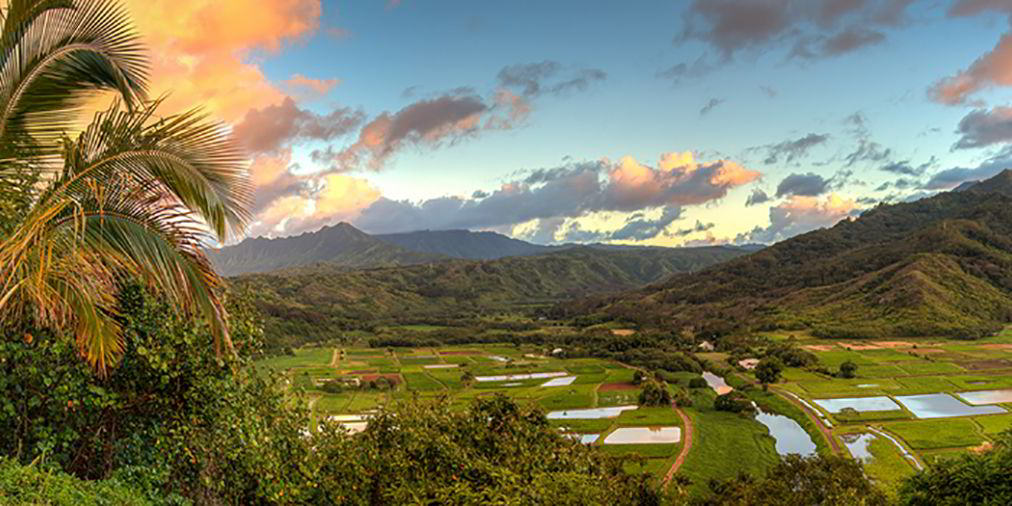This spring on the “Garden Isle”, SolarCity will kick off construction at what will become the first dispatchable utility-scale PV plant ever built on US soil.
The as-yet-unnamed project will consist of a 13MW (AC) ground-mounted PV array and a 52MWh battery system capable of discharging 13MW at any given moment — on an island with a peak load of less than 80MW. Providing clean solar power for up to five hours after the sun has gone down will significantly reduce Kauai’s reliance on dirty and expensive diesel-fired peaker plants that are switched on daily to meet evening demand.
“The project represents, to me, what solar will look like in the next decade,” SolarCity chief technology officer Peter Rive tells Recharge. “It’s indicative of what you’ll be seeing in places like California as we approach 2030.”
Today, it still takes a special set of circumstances to make the economics of such a project stack up. It works in Kauai because Hawaii suffers from extremely high power prices due to its dependency on imported oil for much of its electricity.
As a result, the market for renewables (and especially solar) has exploded in recent years. Kauai — population 67,000 — sourced 5% of its power from renewables in 2009; this year the figure will approach 40%.
On the sunniest afternoons, Kauai’s network of solar arrays generate enough power to meet 95% of the island’s electricity needs. While welcome in many respects, this daily solar deluge also causes big headaches for the local power supplier, Kauai Island Utility Cooperative (KIUC).
The flood of solar that comes on line each day forces the utility to curb cheaper baseload generation in the afternoon, then rapidly ramp up polluting peaker plants in the evening as the solar output melts away.
SolarCity’s plant will help alleviate this problem. The power generated during the day will be stored in batteries, and then discharged between 5pm and 10pm — allowing KIUC to curb its use of diesel-fired generators in the evening. Batteries have the added advantage of ramping up far more quickly than any conventional peaker.
SolarCity will sell the stored-up electricity to KIUC under a 20-year power-purchase agreement starting at $0.145/kWh. That’s “quite a bit lower than their diesel expenses”, says Rive, and only “slightly more” than the utility pays for solar power during daylight hours. “It’s a low- to no-risk proposition for them.”
When the plant is finished in late 2016, Kauai’s electricity system will be cleaner, more efficient and cheaper. “You’re going to have a solar-based generator that’s superior to a fossil-fuels-based generator, with no questions left unanswered,” says Rive.
There are already two large battery systems in place on Kauai, including one built alongside REC Solar’s 12MW Anahola PV plant. However, as with most grid-scale battery systems in the US today, both primarily provide frequency-regulation services — helping KIUC smooth out its volatile, renewables-swollen grid.
In contrast, SolarCity’s storage system is being built specifically to soak up the power generated by the PV array and then discharge it when it is most useful to KIUC. “It’s not a storage system integrated with a solar plant,” Rive says. “It’s being built as a single system — it’s a new type of system.”
But the Kauai project is not a mere learning exercise, he emphasises. “We’ve been doing a lot of learning exercises on batteries and storage for the past five or six years.
“This is the first large-scale commercial application of it. The learning is mostly done.”
Because the batteries at SolarCity’s plant will be charged primarily with solar power, the entire project — storage included — will qualify for the 30% solar investment tax credit.
Even so, the rapidly falling cost of batteries was critical in making the Kauai project pencil out, Rive says. SolarCity has been pitching similar projects to KIUC for several years, but the numbers did not work until now.
While SolarCity has not yet disclosed its suppliers, it’s no stretch to imagine that Tesla will supply its lithium-ion-based Powerpack system. Elon Musk is chairman of both Tesla and SolarCity, and is also the first cousin of Rive and his brother Lyndon, SolarCity’s chief executive.
Another form of utility-scale solar, concentrating solar power (CSP), has been incorporating large-scale storage for years. But CSP projects typically employ thermal storage technology rather than batteries, and only make economic sense at grand scale — 100MW or larger — and in fairly limited geographies. Dispatchable PV, on the other hand, will increasingly make sense at nearly any scale, from behind-the-meter systems of a few kilowatts to huge projects of hundreds of megawatts. And utility-scale PV projects can be built in a fraction of the time of conventional power plants.
Sunny islands, from the Pacific to the Caribbean, will be important early markets for utility-scale dispatchable PV plants, as will developing countries with weak or isolated grids and high power prices.
The market for such projects will begin opening in places like California “by the middle of the next decade”, Rive says. “And then I think the rate of adoption for generators like this will basically just take over all fossil-based generators.”
Hawaii’s electricity market is often described as a “postcard from the future”, given its extraordinarily high levels of renewables penetration. For fossil-fuel generators, though, SolarCity’s Kauai project may feel more like a memento mori.
ONES TO WATCH is Recharge’s exclusive series of insights into the trends, policies, companies and individuals that will shape wind and solar in 2016.

